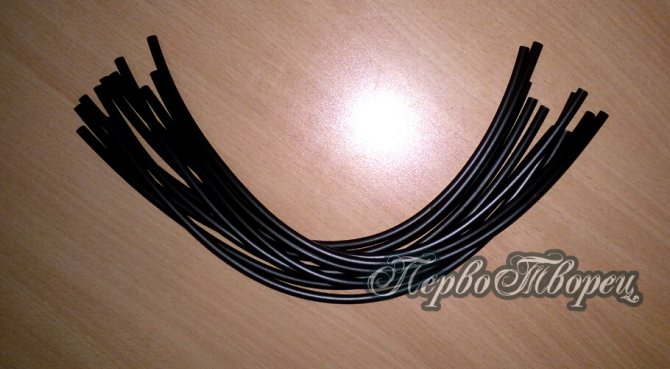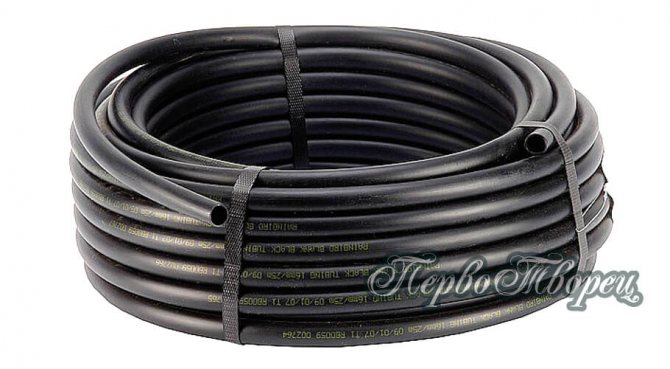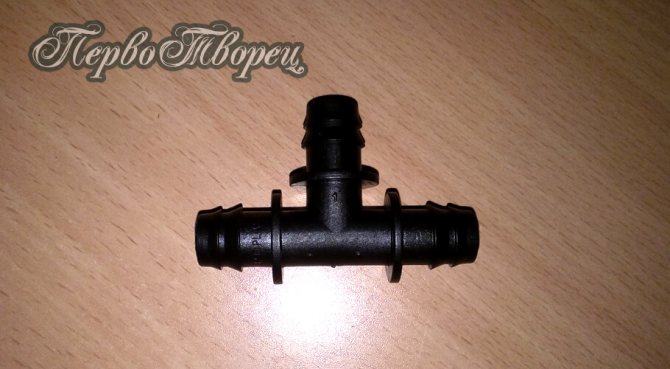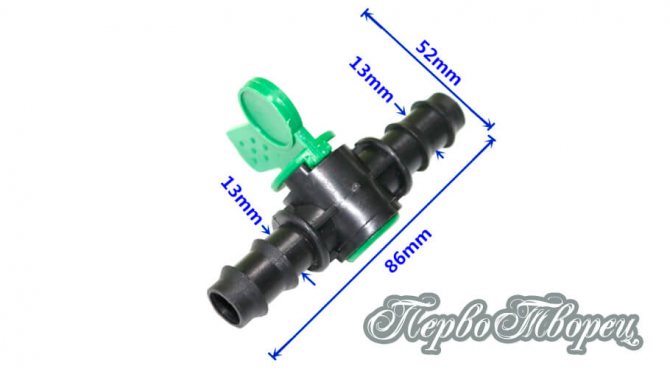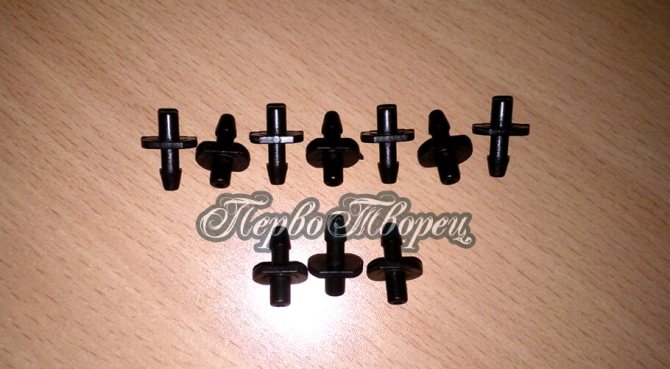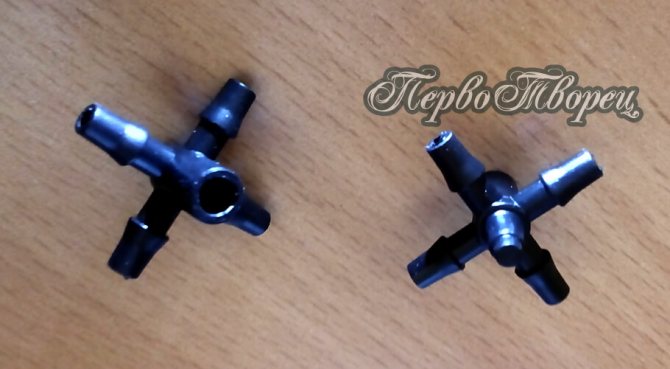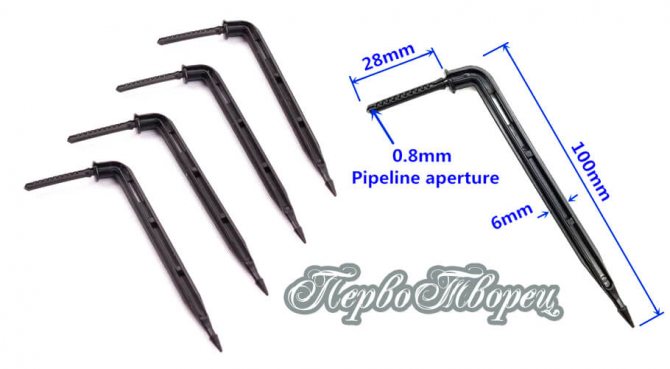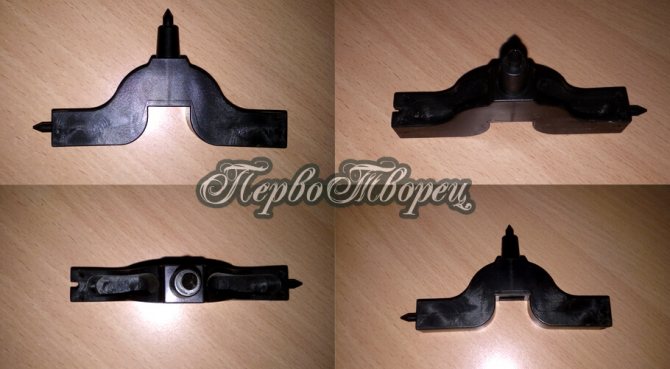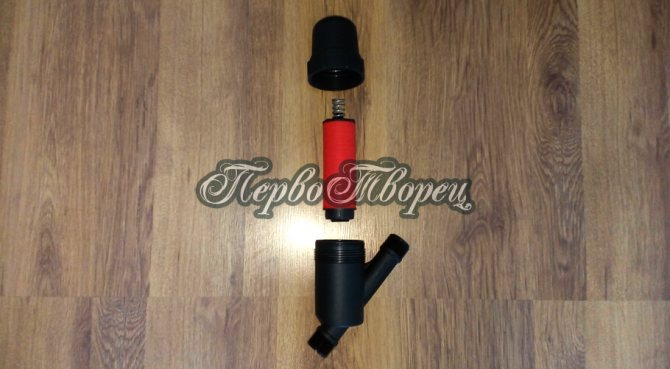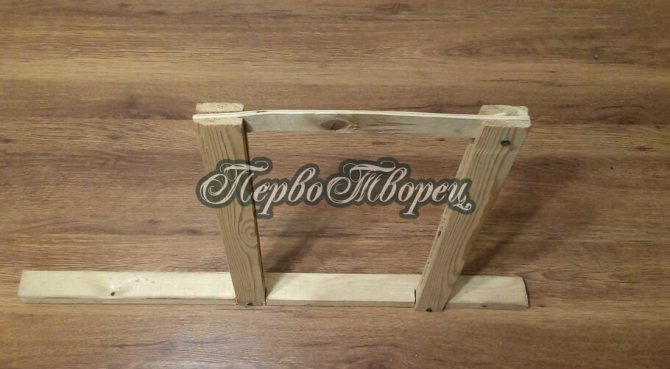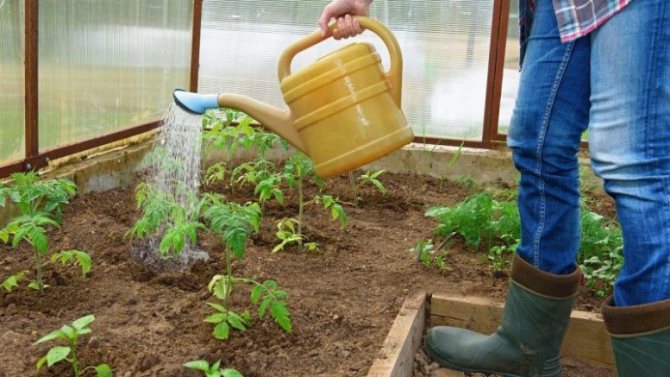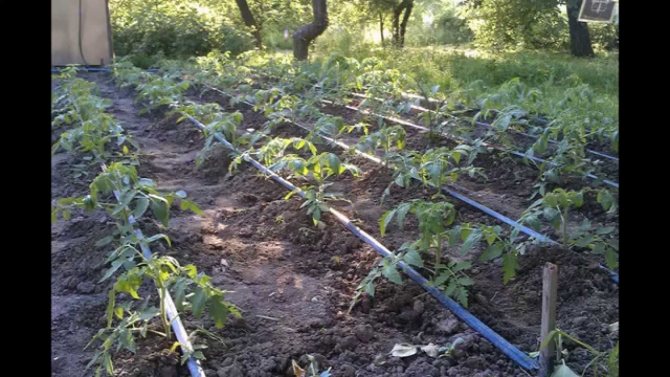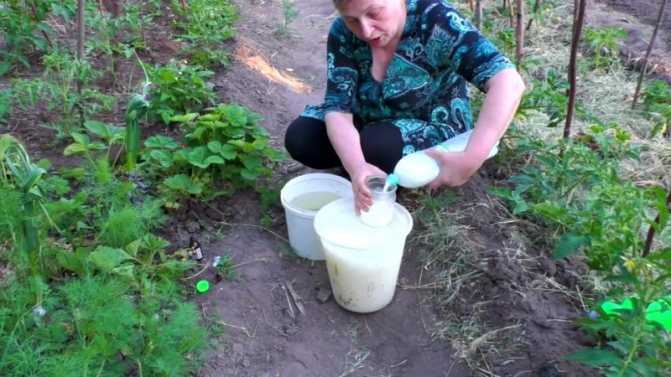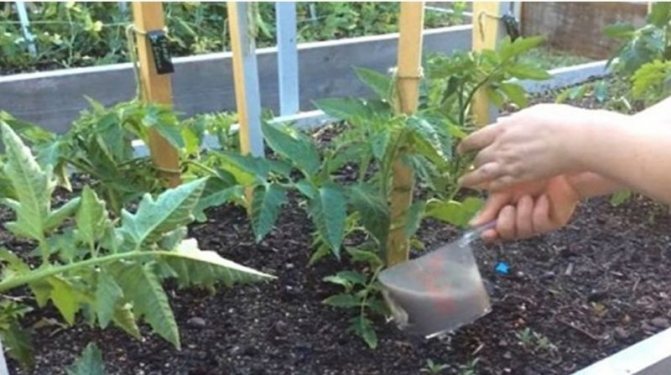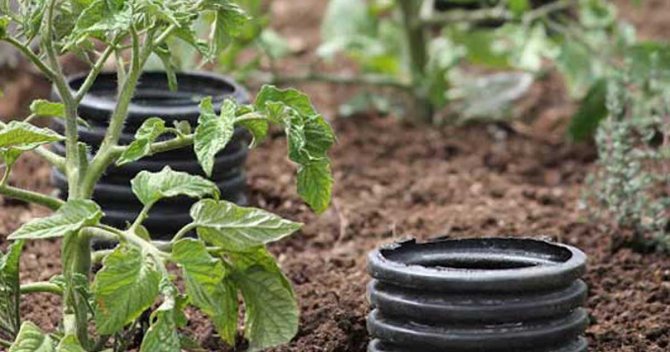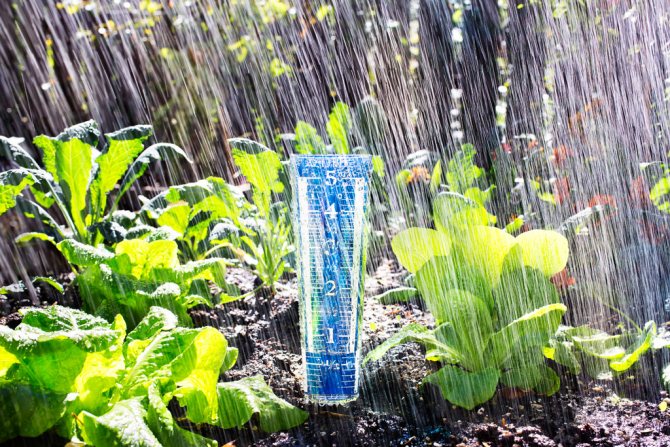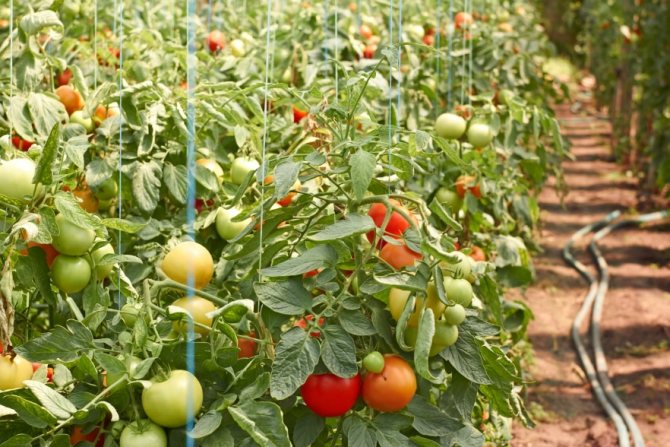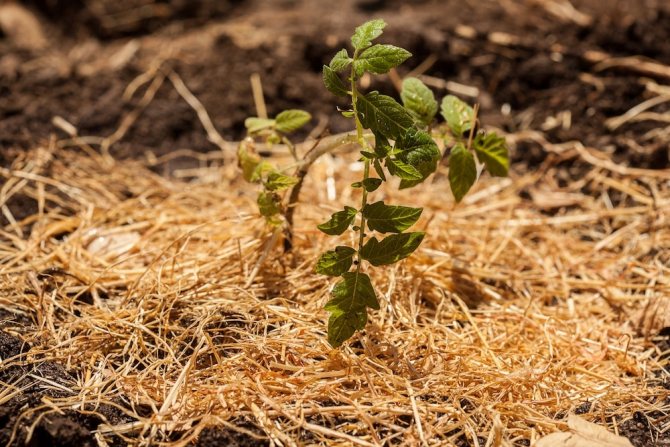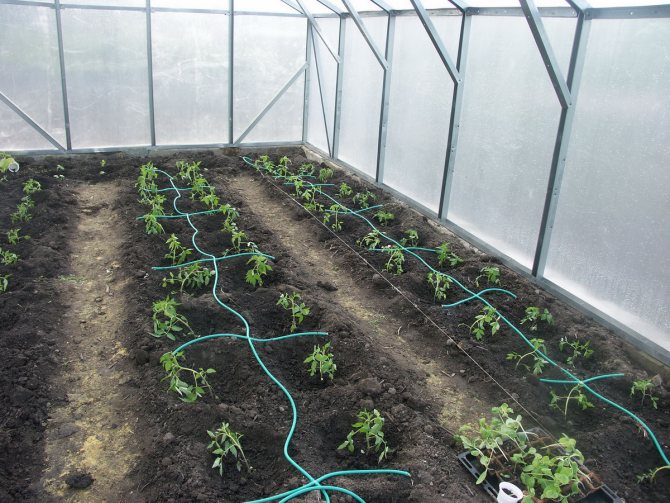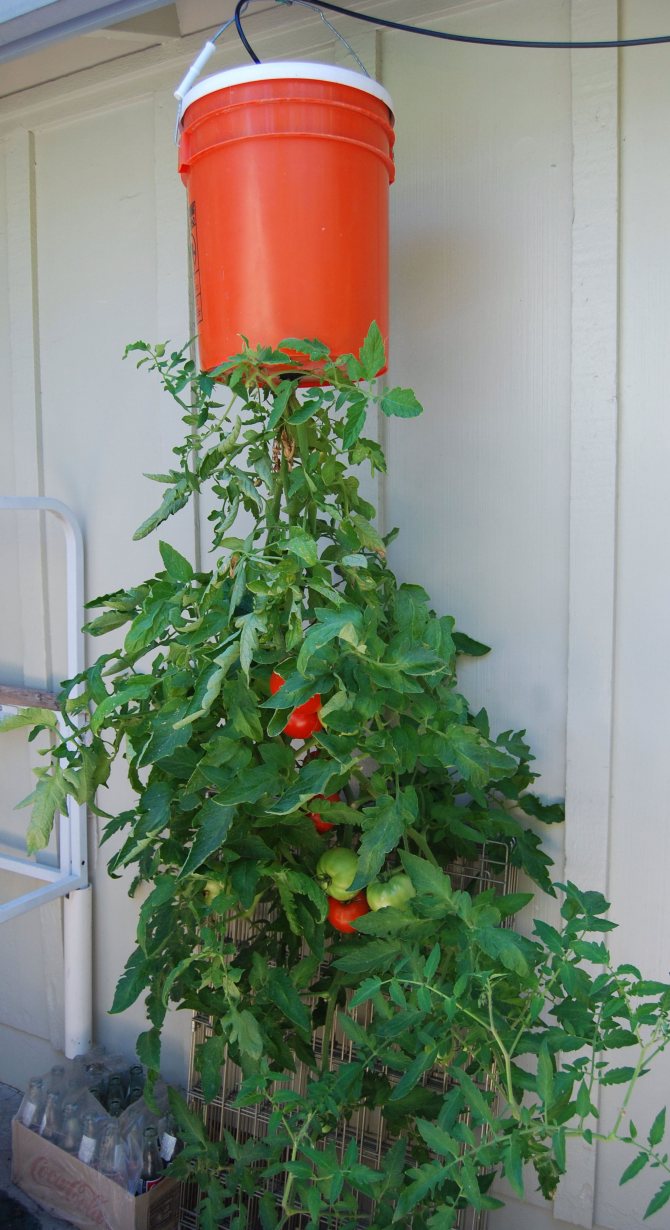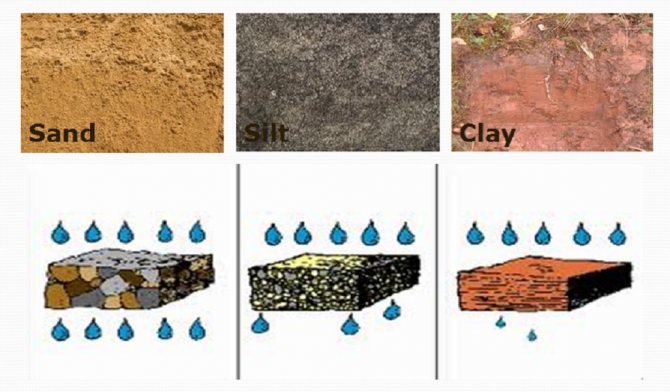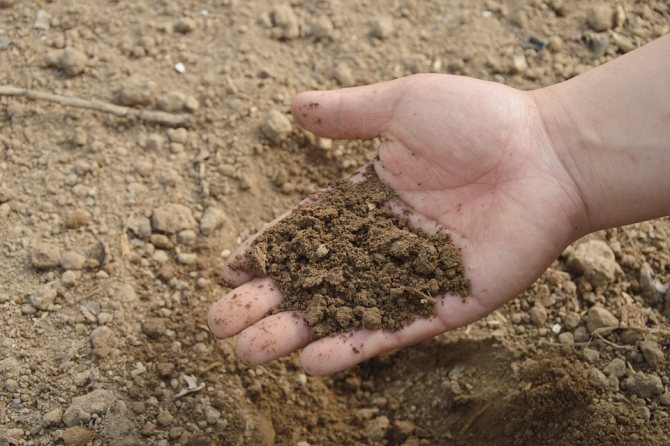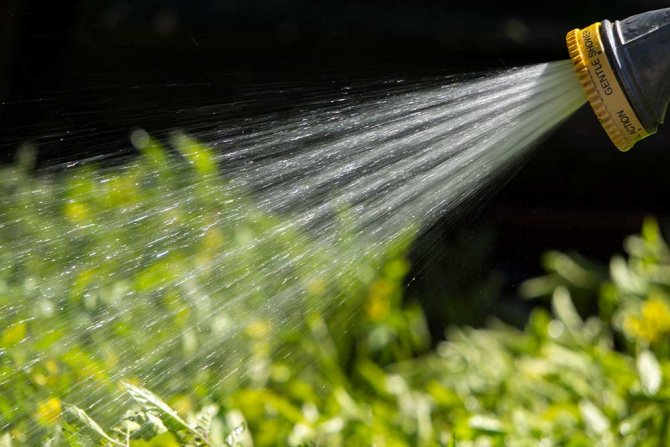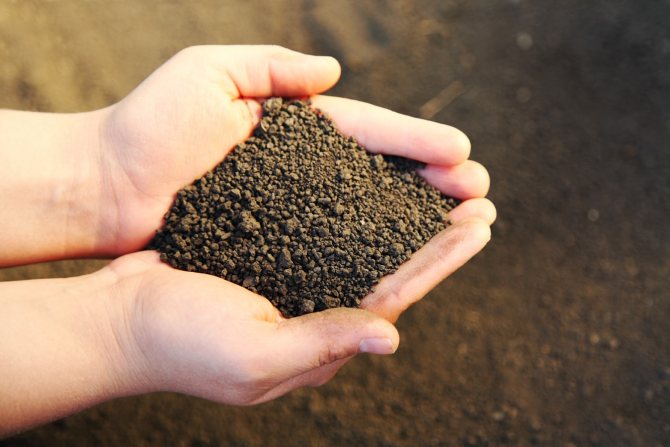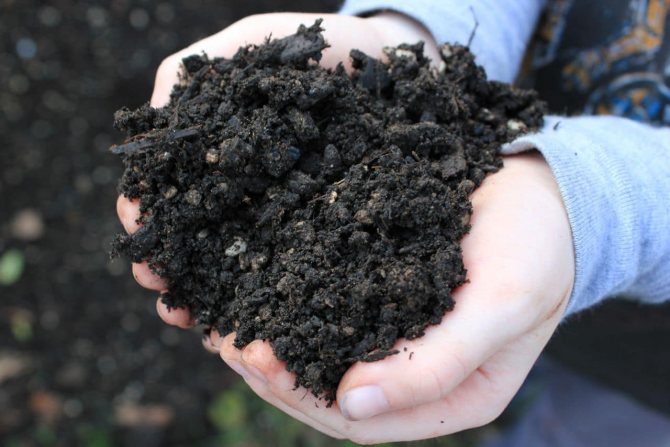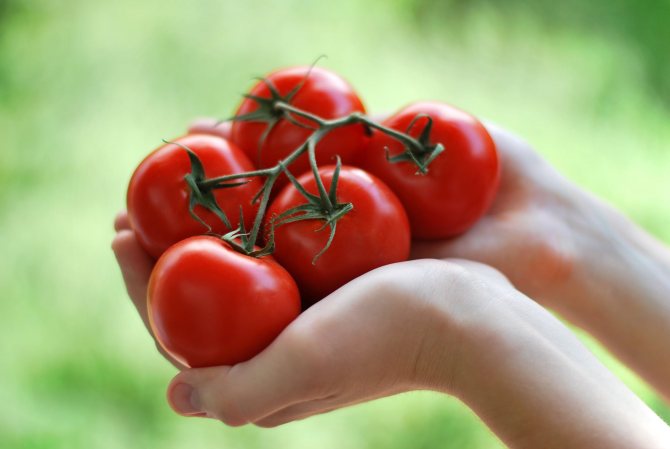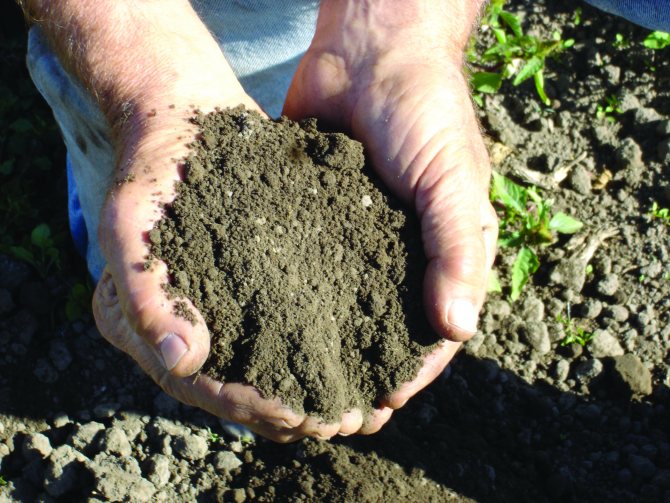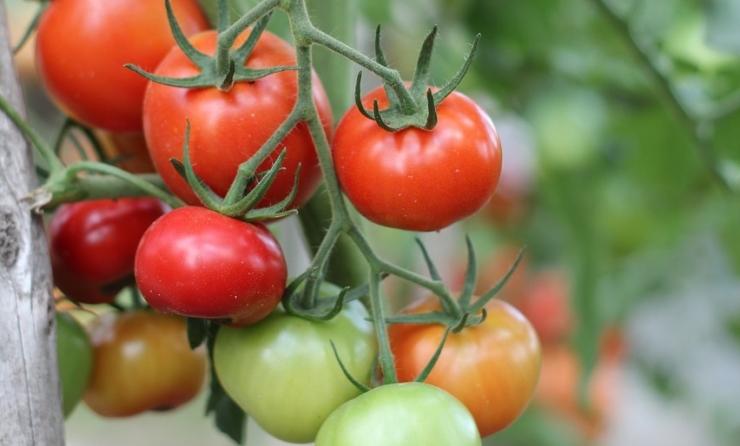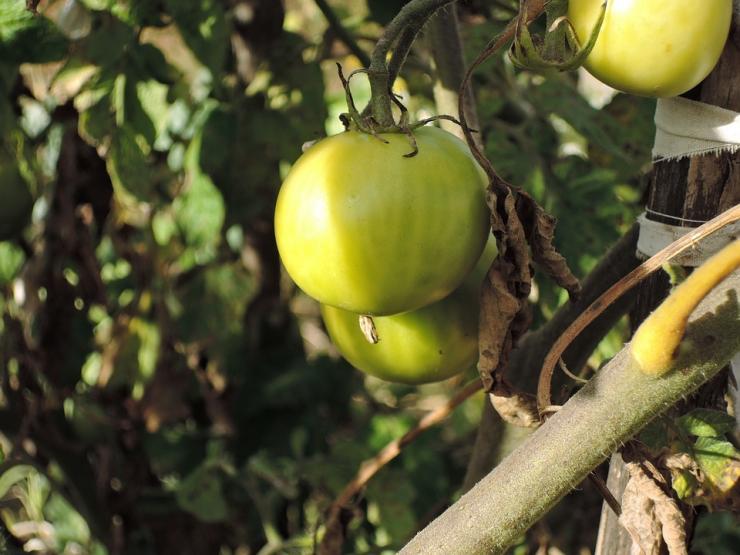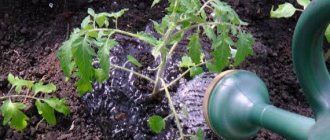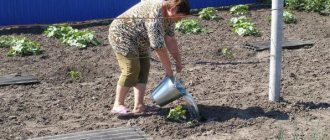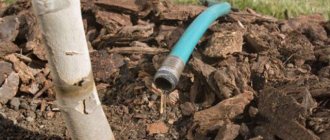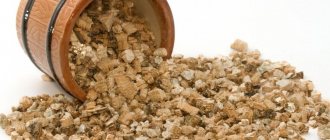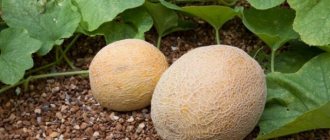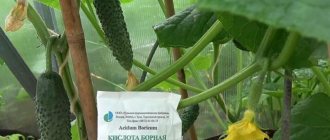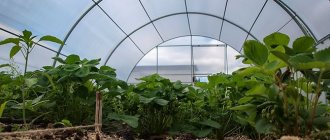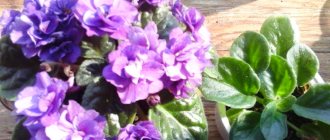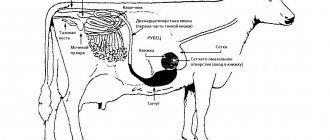Drip irrigation of plants: features, types
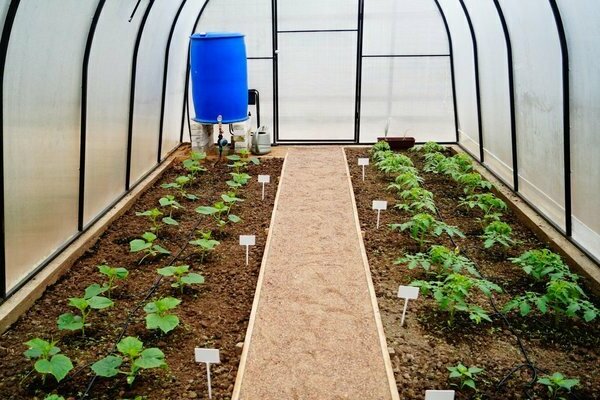
In greenhouses, drip irrigation will be no less in demand than in an open area. After all, regardless of the place of cultivation of various crops, both energy and time are spent on watering. But the installation of pipes and containers will not be enough. It is important to understand well the operation of a device that supplies liquid to a plant. All installations are the same only in water supply, that is, in drip irrigation, but in all other respects, they are different.
Drip irrigation systems are made in such a way that water passing through the main pipelines is supplied to the plants through belt parts and drippers. With the help of them, you can regularly water the plants with the help of small drops, maintaining moisture in the soil.
Video
The success of a good yield of vegetables in a greenhouse on a personal or summer cottage is different for each owner. And, unlikely, they will reveal all their secrets. However, there are common fundamental points, among which timely and correct watering of plants plays an important role. The process is painstaking and laborious. However, it can be easily alleviated by arranging drip irrigation for the greenhouse from a barrel in your area. The idea is not new, but it has been adapted for the private sector relatively recently, and is rapidly gaining its popularity.
What are the pros and cons of a drip irrigation system
Using such equipment, the soil will always be moderately moistened, comfortable conditions for weed crops will not be created, water consumption is reduced by a third, in comparison with classical irrigation.
While there are huge advantages, there are also disadvantages, namely technical and cost-related. The fact is that such systems are complex enough to deal with their technical side and install on their own. We have to call specialists, and this significantly increases the cost of an already expensive device.
You will also need to regularly check the water that flows through the pipes. It must be clean. Since the clogging of the irrigation belts leads to their complete replacement, which will require additional funds and time. If this situation occurs during a particularly hot season, then you can lose the harvest.
Engineers working on such a technique saw potential problems. Therefore, many of them began to look for an opportunity to solve this problem. The clue was near, they found it in the rain. Thus, the water supply from the source began to move into the sprinklers. They can be installed both in the garden and next to the roof, it all depends on the concept.
In this version, as well as in the first one, it will not be supplied not through jets, but through neat drops. Using absolutely any sprinkler, you can saturate plants with water over a large area of land. But, this is perhaps all the pluses.
TO cons can be attributed to the possible threat to which the plants grown in the greenhouse are exposed. The fact is that due to such a system, a lot of liquid can accumulate, which will provoke burns on the leaves. But here, too, the specialists did not remain indifferent.
When technologists discovered these disadvantages, nature came to their aid again. They were able to solve the problem by directing the liquid to the base of the plants.This has proven to be a very effective way, as other steps can be bypassed, which, as a rule, lead to excessive use of water. But when using such systems, it is necessary to lay pipes underground. Despite additional aeration, and not just humidification, this affects the complexity of the work carried out and the calculation.
For this reason, gardeners are tricky and replace pipes with ordinary plastic bottles, making small windows in them and burying them next to plants. This method significantly reduces material costs, you just need to stock up on the right number of bottles.
However, there is also a minus here. In this case, watering will become semi-automatic and will require monitoring the level of water in bottles several times a week. In the case of hot days, you will have to devote time to this much more often.
Differences between systems are also made according to the type of water sources.
The source of water on the site can be a well, a storage tank, an artesian well, a well in the sand and, of course, a water main.
Whichever source is used, the main thing is to monitor the temperature of the water. Plants do not tolerate when the air is much cooler or warmer than water. If you do not monitor this, then no matter which irrigation system you use, the plants can be seriously damaged.
Before watering, you need to let the water brew, especially when it comes to wells or wells. Watering with water taken from an open reservoir is fraught with infection.
During installation, it is necessary to use reducers that compensate for sudden pressure drops in the water pipe. In addition, the installation of filters is important, this is the only way to ensure the correct operation of the system.
Tips from seasoned gardeners
Experienced vegetable growers during prolonged heat recommend reducing the temperature in greenhouses by sprinkling not only inside, but also outside. The structure is poured from the top with a hose. When sunny days are too bright, the glass of the greenhouses is sprayed outside with a weak solution of chalk.
Gardeners are advised to water cucumbers in the early morning, when the sun's rays are not able to quickly evaporate moisture. In this case, water completely enters the ground, and the roots receive it in full.
With all the love of cucumbers for moisture, they cannot be poured.
The plant needs water not only for the root system, the green mass also needs it very much. Large cucumber leaves evaporate water quite intensively. Replenish moisture reserves in foliage by sprinkling. The smallest sprayer is put on a watering can or a hose so that large drops do not injure the leaves.
It must be remembered that the sprinkling method is applied only to healthy crops. If there are suspicions of diseases such as powdery mildew, anthracnose, spotting - sprinkling is completely contraindicated. Cucumbers are watered only using a drip system.
To make the water for irrigation warm faster and better, the tank is painted in dark colors.
With drip irrigation, it is very convenient to feed vegetable crops. All fertilizers can be added directly to the water tank.
Drip irrigation - what is its benefit
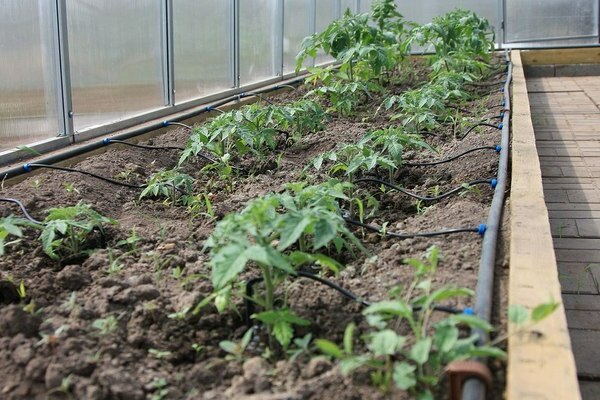

You can talk for a long time about drip irrigation of various types, but the most important thing will be the benefit. What benefits can be obtained by installing such a device on your site and what effect this will have on vegetable and berry crops.
Using micro-drip irrigation, you can greatly facilitate your work in the garden, reduce financial costs for water, optimizing its consumption. Thanks to such installations, it is possible to significantly reduce the risk of developing various diseases that appear due to excess water in the soil. And also the plants will not need constant attention.
All this is quite obvious, because the ability not to walk around the site with full buckets of water greatly facilitates the work and frees up a lot of time. The fact that the liquid is targeted to specific plants not only helps to reduce water consumption, but also increases their fertility.
Using such drip irrigation, crops can be removed in large volumes in a shorter time. Drip irrigation will only deliver water to specific plants, not weeds, which means their growth will be significantly reduced. Among other things, this method does not destroy the soil, unlike the usual one, which, due to uneven distribution, undermines its structure.
Dangerous diseases that are transmitted to each other are blocked, as the chaotic movement of fluid stops. By combining drip irrigation with liquid mineral fertilizers, the benefits of dosages will increase and useful fertilizers will go directly to where they are needed. In especially hot periods, you can be calm about the plants, as sunburns will be bypassed. It is important that the wind has no effect on the quality of drip irrigation.
Irrigation types: different systems
Now let's figure out what are the main types of drip irrigation. Each system has certain disadvantages and advantages. Here are the main options:
- for automatic watering with separate droppers, branches are supplied to each plant. In this case, the irrigation radius should be small, since such unfolding takes a long time. The main elements of such systems are microtubes, through which the liquid passes to the root system. For installation in a greenhouse, splitters, special valves and stands for fastening micropipes are used;
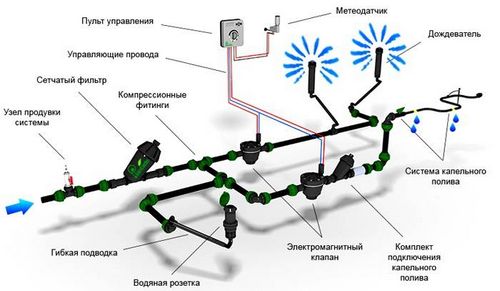

Option for distributing elements in automatic irrigation
- drip tapes they are used not only for plants, vegetable gardens, but also for trees. In this case, the sprinkler pipes are placed in parallel. Such methods of irrigation do not have such a long service life as individual droppers of sprayers. For automatic irrigation of fields, there are holes on each belt through which water flows. One edge is located at the tank, and on the other, plugs are mounted. This ensures that the liquid flows out against the desired roots.
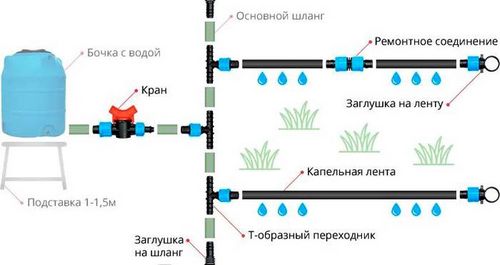

Irrigation system with belts
Also, when choosing an irrigation system, you need to consider different types of hoses, types of sprinklers and sprinklers.
Diy drip irrigation: device
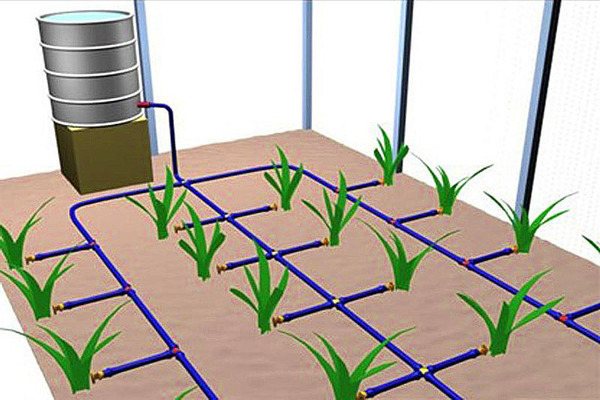

Drip irrigation devices avoid the tough, impermeable soil crusts that form with conventional irrigation. The supply of water occurs evenly, so all the beds will always be moistened and there will be no accumulation of excess liquid anywhere. All garden work can be done at a convenient time, and not tied to watering.
The system allows you to avoid damage to plants and dirt on them, since you don't have to walk through the beds with hoses and buckets again. It is possible to loosen and weed the soil less often, and the interval between these two procedures becomes longer. There is a drawback, these are financial costs at the beginning of work and the obligatory careful calculation.
There is no doubt that it is quite rational to install drip irrigation systems in greenhouses. By building the right irrigation complex, you can avoid frustration and enjoy the benefits.
In their correct configuration, the main lines are the main lines that supply moisture to the plants. These can be tapes or tubes. Regardless of the option chosen, they must be laid out in the immediate vicinity of the rows. The choice of highways differs by the expiration date. Some choose for one season, others that work for 6 years.
Polyethylene is mainly used in the manufacture of pipes. After the correct calculation of the distance, droppers are set.Inside the structures there are small aisles resembling zigzags. This was done by technologists in order to reduce the water pressure. And this is the right decision, because having created any other form, it would have been impossible to achieve this. And for newly planted seedlings, a strong pressure of water is very dangerous and can destroy it. You can replace the tubes with tapes; polyethylene is also used for their production. They are twisted in a certain way and their connection takes place by the method of heat welding.
During the production of strip structures, small holes are specially made on their seams. They serve as a supplier of water to plants. The tape is laid out so that the drip channels are at the top. For the system to be as practical and reliable as possible, it is necessary that the layout is located in close proximity to a straight line. If you take into account the reviews, then experienced gardeners note that regardless of the conditions, with a large area, the tapes show themselves much better in comparison with pipes.
However, for watering to be automatic and competent, you cannot use only tubes and tapes. Installation of the main pipeline that supplies fluid to the right place is indispensable.
Installation of the main pipeline
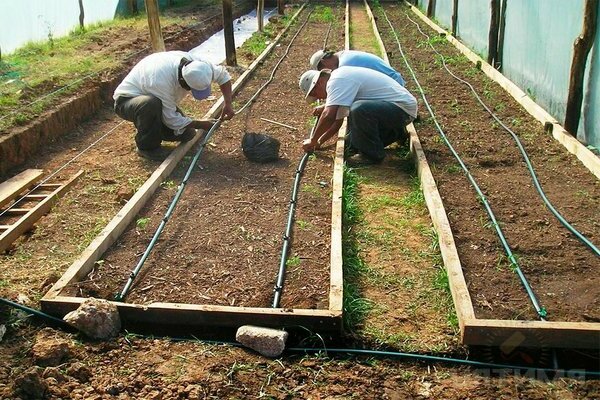

The usual method is to install a faucet 1 meter above the water source. Next, a hose is attached to it, which extends to the place of irrigation. There, a pipeline is attached to it, which ensures watering of all plants.
In order for the hose to hold well, it must be secured with staples made of wire. In this way, accidental shifts can be avoided. The pipe serves as the pouring channel. The length and diameter of which is selected especially, how this is done, we will tell below. A filtering system that purifies water must be installed on the reservoir from which the water is taken. A reservoir is necessary, it will protect against the effects of a possible failure in the water supply.
The valve installation procedure can be carried out before and after the filter element. Regardless of the option selected, the device value will not change. It will regulate the delivery time and water flow rate. Fertigation is a method of fertilization and its block - often has an important role in the entire system. They are used by gardeners who decide to combine irrigation with fertilization and other chemicals. Systems in their modern form have already been tested and tested by time. This allows us to say that plants are guaranteed to assimilate all the substances they need.
This applies to automated systems that deliver moisture to greenhouse plants. But there are a number of cases where there is no need to use such features, since they will be superfluous.
For example, the organic method of growing plants does not imply the introduction of pesticides and liquid mineral fertilizers into the soil. This means that the corresponding nodes and their configuration are simply not required. In addition, it is quite difficult to create a full-fledged irrigation structure, so many are afraid to take on it.
For this reason, there are trade-offs in solving the problem. For example, using plastic bottles or other media. With all the advantages of drip irrigation, one must remember that regardless of the type chosen, they must be carefully controlled. They require constant adjustment and readjustment, which is carried out depending on the needs of the plant and the weather conditions.
The final elements are selected depending on which plants will be watered, on what area will be watered, and, of course, on financial capabilities.
They can be compensated and uncompensated. When using the device of the second option, at the beginning of watering, more liquid is supplied, and closer to the end of the bed, it is supplied in a smaller amount.As for the first option, here the water will be distributed evenly, regardless of pressure surges. When the height has significant differences, the method of irrigation with the help of compensated devices avoids negative effects. Both units do not completely pump out all the water, even if the operation is completely stopped.
This can be considered a plus, since starting the system again, it does not waste time pushing the air out. Sometimes other systems can be used that can throw water not only on one plant, but they require a large financial investment.
A collapsible dropper is always made and does not depend on which system is mounted. When installing droppers, you must observe a distance of 30 centimeters between them. However, this does not apply to all plants, there are those that require the use of other irrigation schemes. The so-called "spiders" are used in the cultivation of perennial plants. They are considered the best option in this case. For them, the mains through which water flows must be suspended. For irrigation of root crops, the installation should be at a distance of 20 centimeters. For melons, a distance of 100 centimeters is maintained.
Self-fabrication of the system
It is no secret that many owners love to equip personal or summer cottages with their own hands. This is not only saving money, but also a kind of hobby - to combine outdoor recreation with pleasant chores. Therefore, it is quite possible to independently make a drip irrigation system.
First you need to make the necessary calculations and draw up a diagram. The calculation takes into account the geometric dimensions of the greenhouse and the number of plants. This determines the length of the water supply and the required number of holes for droppers.
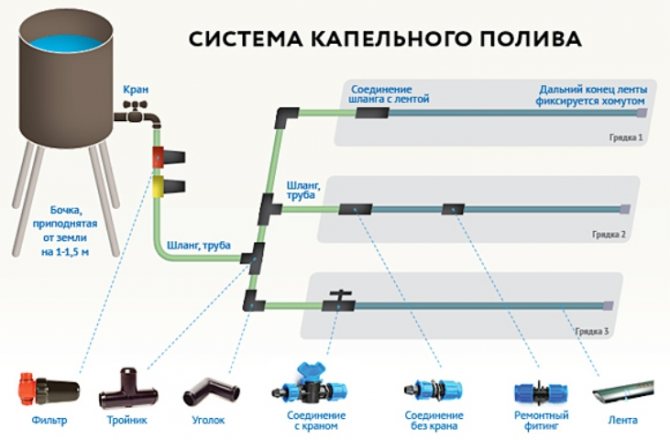

Example. For a greenhouse measuring 4 by 6 meters, with three rows of 10 plants each, you will need about 25 meters of pipe or hose and 30 drippers.
You will also need a barrel with a capacity of 200 liters or more, a water tap, an adapter for a filter, material for making an elevation for a barrel, corners and connectors for pipes or hoses, fum tape for sealing connections.
Important! It is better to use plastic and opaque barrels and pipes. They do not corrode and do not transmit light (algae growth is excluded).
All the necessary materials can be purchased at any hardware store. For example, "Leroy Marlene" is ideal for these purposes - a wide assortment, affordable prices, the ability to deliver purchases.
After that, the direct assembly of the system begins, according to the preliminary scheme. The barrel is installed at a height of 1-2 meters. A crane is cut into its lower part, after which a filter is installed. You can make it yourself by filling a small adapter with cotton or foam rubber.
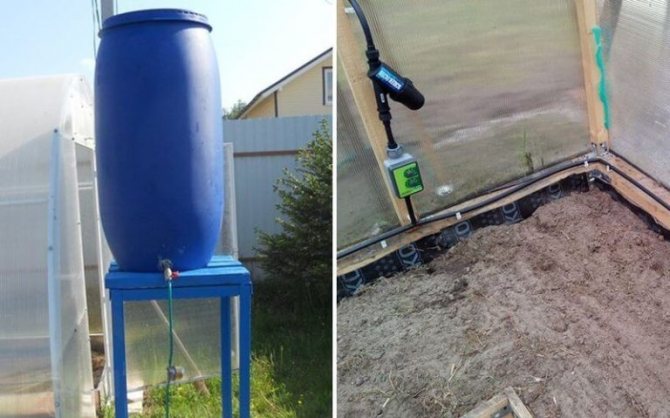

Important! The filter should be easily removable for cleaning or replacement as needed.
Droppers coming from pipes or hoses should preferably be fixed near the root of the plant. The system is ready and you can fill the barrel with water. The feed rate is regulated by turning the crane and is determined empirically.
Water consumption for drip irrigation
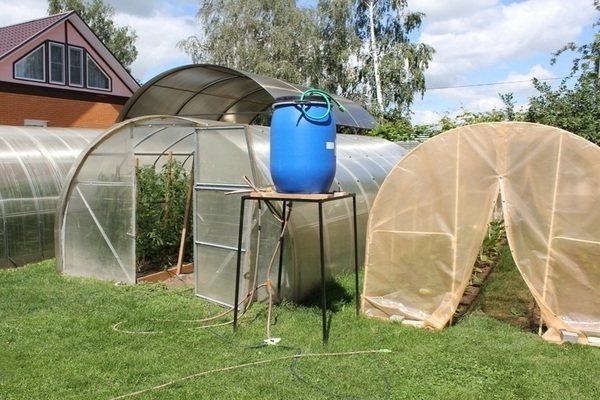

In addition to choosing the design of the system, you also need to understand how much water should pass through the homemade holes. This must be done in order to determine the choice of the source and how they can be used in different conditions.
In addition, there is a nuance that must always be taken into account. Since it can become something that will entail many negative consequences. In an effort to save water as much as possible, you can make the consumption so low that it simply will not be enough to provide the required amount of moisture to the plant.As a rule, this is the reason for talking about improper drip irrigation.
It should be calculated based on the analysis of the internal air temperature, moisture level, type and variety of plants, light intensity. Turning to the literature written by specialists, it is difficult not to be intimidated, because the description is quite scientific. In them, they, operating with Pennman's equations, describe the method, referring to the use of potentiometers and strain gauges.
In reputable organizations organizing large greenhouse farms, they use equipment that allows you to constantly monitor all fluctuations associated with changes in the stem around the clock. But even professionals at the moment do not have a methodology that allows you to inform in advance about the required water consumption. For this reason, it makes no sense to use such a technique on personal plots. This is not only difficult, but also requires a lot of money.
And yet there is a way out. Agricultural and botanical guides can provide insight into the needs of various horticultural crops. But, unfortunately, this information is not enough. It is also necessary to take into account the soil on which the plants are grown, namely, what is its minimum moisture capacity. Considering that the chemical composition and mechanical structure of the soil is different, then the characteristics are very different and only in laboratory conditions can the value be accurately determined.
The next important parameter in the calculation is drip irrigation, namely its frequency. In order to calculate it, you need to know not only the minimum moisture capacity, but also the limit values, and the moisture level that affects wilting. You can determine the minimum moisture capacity by the condition of the soil. The water saturation of the capillaries at the moment will be 100% and there will be air in the pores. With such a balance, the best conditions will be created, to which one should strive. Maximum moisture content is abundant hydration of pores and capillaries.
There is nothing complicated about wilting moisture either, although the term seems to be very scientific. It speaks of the high dryness of the soil and the pressure difference, at which the osmotic flow of water cannot be ensured. That entails a loss of plant tone and death. If a similar situation has occurred, then it will not be possible to correct it with the help of intensive watering and further moistening. If the soil is dense clay or heavy sandy, then its maximum moisture capacity will be almost equal to the wilting moisture.
For this reason, watering every two days, you can unnecessarily make the soil moist. But, sometimes, after one day, the soil will again become overdried. For loamy soils, watering will be sufficient once every three days. The values are changeable and the calculation of the moisture requirement is done based on how much water is needed for a particular plant variety. It also depends on the planting density, the number of rows and the duration of watering carried out daily.
Automated systems: what are their advantages and disadvantages
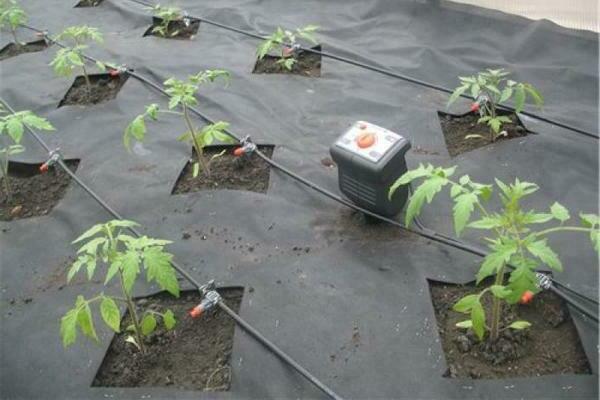

After the exact need for fluid has been determined, it is necessary to determine how we want this flow to be controlled. Automatically or manually.
Automatic drip irrigation certainly has many advantages. This greatly simplifies care, does not require physical strength, and more free time appears. And by installing systems that have timers, you can stop worrying about drying out your garden crops.
However, despite the seeming simplicity, this is not quite the case. In order to install a high-quality automatic system that can facilitate work in the garden, you need to invest a lot of money. Installation and adjustment will also require professional work. Maintenance is required twice a year. In addition, water sources must correspond to the required capacities and characteristics.So that in case of damage to the system, a swamp does not appear in the greenhouse. It is important to carefully design and take into account all the smallest nuances.
Water supply options
After the choice between automatic and manual systems has been made, it is necessary to decide how the liquid will be supplied. With only rare exceptions, food comes directly from a well or a water supply system. Usually, this is a tank or barrel.
When drawing up a pipeline network plan, one must be guided by the location of the greenhouse, the soil, the reliefs on the site and the observance of generally accepted norms for organizing correct irrigation.
Getting water from underground sources is difficult and expensive. If you connect to a water supply that has already been stretched, it will simplify the task and make it cheaper. The great advantage of this is the purity of the water. But this does not mean that chemical analysis is not needed, since unpleasant surprises can be expected even from wells drilled into the sand.
When choosing a system, one must also understand whether it is needed under natural pressure or should be equipped with pumps. In either case, the structure will be designed for watering a large area of land. With a low head, watering is possible on 10 meters of the garden. When installing a system with a more intensive flow, it will be necessary to invite specialists, since its installation is more complicated.
How to make drip irrigation in a greenhouse at home
After you have managed to figure out the water consumption and the design of the irrigation system, you need to figure out the organization of spraying in space. If there is a natural water supply, then it will be enough to install one main line and outlets. But the functionality of simple systems is not popular with gardeners. To create the correct scheme, you need to determine how the plants will be located in space.
Drip irrigation in the greenhouse: scheme
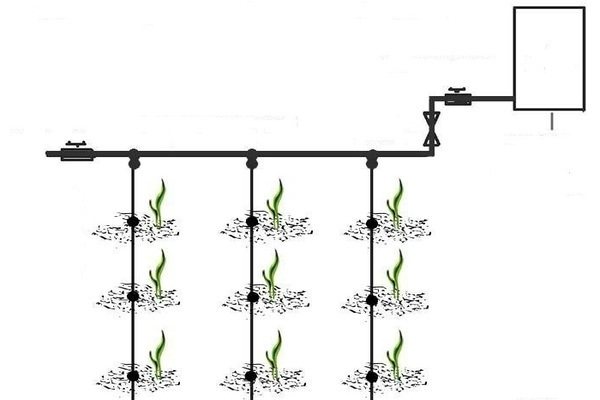

The diagram should reflect how the main pipes will be placed, where there will be places where the shut-off valves will be installed and where drip pipes and stand-alone drippers will be located.
You can lay pipe equipment or hoses on the ground or using special supports underground. In the first case, everything is quite easy and simple. The main thing is to use only pipelines that do not allow sunlight to pass through, as they pose a threat to the development of pathogenic bacteria.
If the second option is chosen, then you will need to use a material whose walls will be strong and thick.
If the area is shallow, then the hoses must run at an angle. Before installing them, you need to make a markup indicating the location of each connection. So it will be possible to correctly calculate the required number of components. This moment is very important, so you shouldn't ignore it.
A set of required tools and accessories
For self-organization of drip irrigation in a greenhouse, you will need to use main plastic pipes. They are light enough, inexpensive and can be used for watering perennial plants. If there is no water supply or it has weak power, an excellent option would be to install a tank at a height of two meters. It is very important that air and sunlight penetrate into the selected structures, if they penetrate, then in a small amount, otherwise algae will begin to develop.
Common technology is to include filters and starter connectors in the set. Each set may differ in the number of connectors and their types. To properly equip the system, you will need a pump with the appropriate parameters. At the moment, there is no special pumping device, so you need to choose those that can pump the required volume of cold liquid. Selecting the equipment, it is necessary to take into account the height of water pumping and its passage intensity. This is the main choice.
It is possible to use pumps designed for heating systems. But only if 100 liters are enough for irrigation, used within an hour. Drip tapes in most cases are designed taking into account a pressure of no more than 1 atmosphere. If the products have thickened walls, then the pressure can be twice as high. A pressure of no more than 4 atmospheres can be supplied to external droppers. However, it should be remembered that the length of the waterway can be long. And this is the presence of changes in trajectories and intersections. All this can reduce pressure as the water moves towards the plant, and this should not be underestimated. For this reason, gardeners prefer to purchase more powerful pumps.
We act in order
It should be noted that systems require mandatory flushing, regardless of whether the old components are used during installation or new ones. To do this, you need to remove the plugs and let air through. This is done until the moving stream is completely cleansed.
First of all, the main pipes are installed, which are stretched along the paths. On the right and left sides of the highways, it is necessary to organize the wiring. To connect such dissimilar segments, you need docking devices that can be disassembled.
Tapes and tubes should not be connected at distribution points until this stage of work is completed. When the pipe is cut off in the required area, a plug is installed on it on one side, and on the other, a transition is made to the water supply line using a tap. The holes on which the connectors are attached should be 1.4 centimeters. It will be correct for the distance between them to correspond to the distance between the plants. A gasket is installed on the dispensing taps. And when the starter connector is installed, soap or silicone grease dissolved in water is used.
Most gardeners like to use plastic pipes to connect the water supply to the filling line. A collapsible connection can be placed between the tap and the last section of the pipeline. This may only be relevant if the greenhouse is seasonal. To do this, you need to roll out the tape, tie the sleeves to the taps that supply water. This is where the preparatory work ends.
Underfilling or overflowing - what are the symptoms with improper agricultural technology
Symptoms of "improper watering":
- leaves curl - in the greenhouse there is a high temperature and insufficient air humidity, watering must be increased, the greenhouse must be temporarily shaded and ventilated;
- apical rot appears - the plants are dehydrated, because of which they "take" water from the forming fruits (watering should be increased);
- inflorescences crumble - plants experience stress from watering with cold water or drought;
- the fruits crack, the stem, tomatoes "fatten" - excess moisture and sudden changes in soil moisture (reduce the amount of water during watering, water in small doses, but more often).
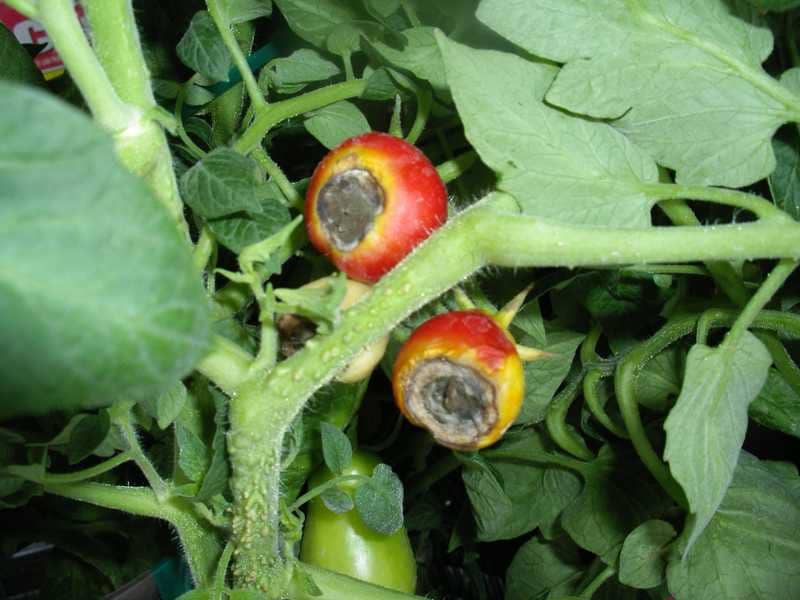

Top rot - a consequence of dehydration and lack of calcium
Observance of the correct irrigation regime in a polycarbonate greenhouse guarantees not only a high yield of tomatoes. Proper hydration is the first factor affecting the taste of fruits, their sweetness!
To be sure of the correct observance of agricultural techniques, you can invite a specialist. He will install and configure the required irrigation system in your greenhouse.

